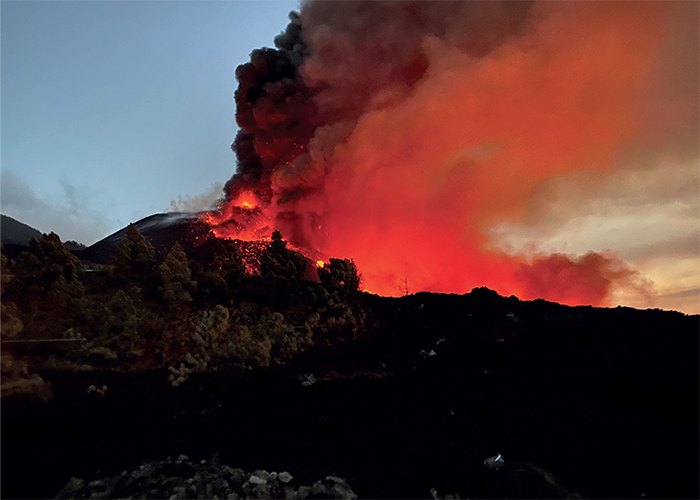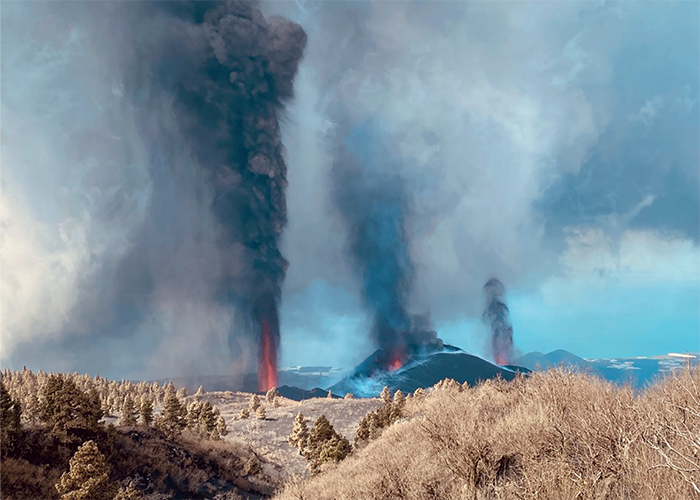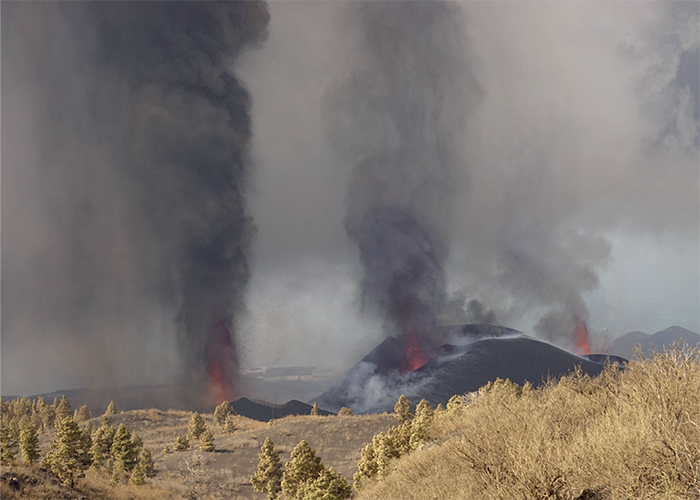Arguably, the most important question when approaching volcanoes is: “What triggers and sustains volcanic eruptions?”
Esteban Gazel, Professor of Earth and Atmospheric Sciences at Cornell University, USA, and a team from the UK, Canada, USA, and Spain, sought to answer this question – exploring the record of minerals and their inclusions of glass and fluid that were once captured as crystal grew from molten magma. These inclusions range from a few microns to 10s of microns, requiring specialized and calibrated analytical tools. Here, Gazel reveals the details of the team’s explosive discovery…
What were your key findings – and why are these results important?
We learned that CO₂ exsolution from deep within the Earth, at mantle depths (20–30 km) triggers volcanic eruptions for volcanoes of basaltic compositions – not water in the crust as previously thought. At these pressures, CO₂ is the only dissolved phase; when the pressure is no longer enough to contain the melt, the lithosphere breaks and starts the eruption.
By appreciating this process, we can evaluate melt replenishment by focusing on deep earthquakes months and maybe years before magma is too close to the surface. The results from this study will help us better understand volcanic plumbing and separate magma signatures from the hydrothermal system of a volcano.

What analytical techniques and tools were used in your research?
We used a combination of different micro-beam techniques, with a spatial resolution of 10s of microns. The processes began with an assessment of CO₂ quantity in the fluid and melt inclusions – minerals crystallized and entrapped in magma – by Raman spectroscopy and new techniques we developed at Cornell. From here, the glass samples were polished for secondary-ion mass spectrometry, allowing us to collect volatile species such as water, CO₂, chlorine, fluorine, and sulfur. To collect the rest of the elements, we applied an electron microprobe analyzer and laser ablation mass spectrometry. Collecting the volatile species allowed us to identify what makes volcanoes eruptive, and the other elements provided other key information, such as the replenishment of fresh magma and mixing processes.
Did you face any challenges?
Our biggest challenge involved calibrating Raman spectroscopy during the height of the COVID-19 pandemic. Anytime we needed a new component when something failed, we had to wait an extended period of time given the impact of the pandemic on the supply chain. Designing a lot of the instruments was also a big challenge, but through our resilience – specifically from my former PhD student Charlotte DeVitre, first author of this study – and motivation, we solved these puzzles.

You used a high-precision CO₂ densimeter for Raman spectroscopy in your study – how does this work?
The knowledge of separation between two CO₂ Raman peaks correlating with the density of CO₂ in a sample has been established for some time. Once we determine this density, we can use a CO₂ equation of state to calculate pressure. To enhance the accuracy of our densimeter, we incorporated a thermocouple into the optical chamber to maintain precise temperature control and take temperature measurements with our custom-built apparatus. Calibration is achieved externally through the optical cell and internally through neon lines, which is standard in Raman measurements. Combining internal and external calibrations allowed us to obtain highly precise data on CO₂ inclusions. We also needed to account for various samples in either a liquid or mixture of liquid and gas states. Therefore, our protocol included heating the inclusions to a temperature where all the CO₂ becomes gas.
This tool could also be used to explore extra-terrestrial samples, deep crustal rocks, and other scenarios where CO₂ is the dominant volatile phase (<90 percent).
What’s next?
We’re working with Penny Weiser at UC Berkeley and Hector Lamadrid at the University of Oklahoma to apply this technology to multiple volcanoes as part of a project supported by the National Science Foundation. We’re also providing the community with the tools needed for near-real time petrologic tools for the monitoring of volcanic eruptions.

In Article Images - Credit: Esteban Gazel, Professor of Earth and Atmospheric Sciences at Cornell University, USA
Teaser Image: The Analytical Scientist
References
- CL DeVitre et al., “Oceanic intraplate explosive eruptions fed directly from the mantle”, PNAS, 120, 33 (2023). DOI: 10.1073/pnas.2302093120.




